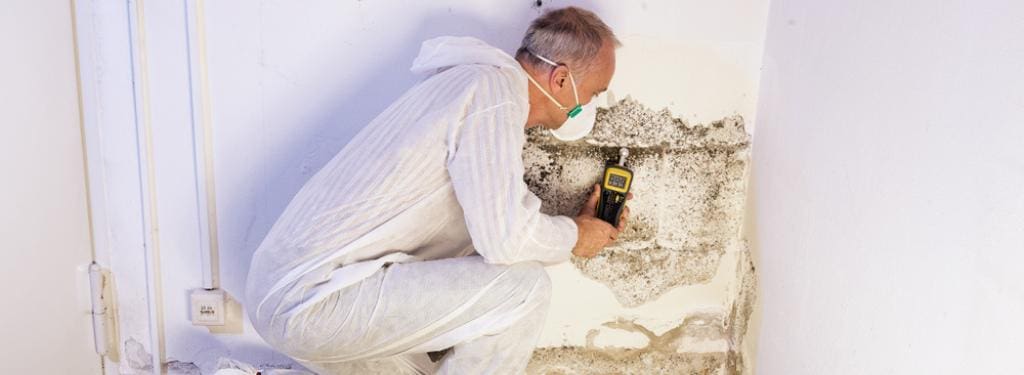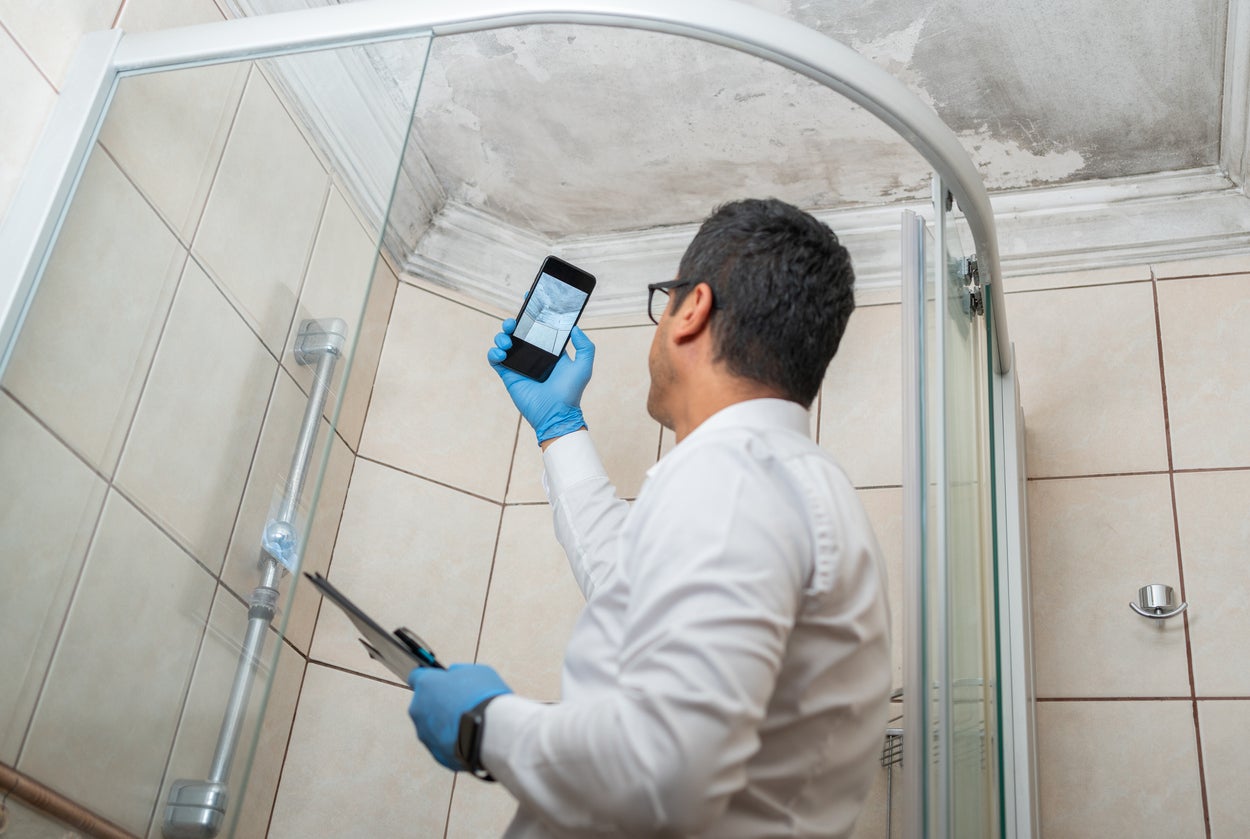Key Steps for Effective Blog Post Mold And Mildew Remediation
Effectively finishing mold and mildew remediation is a diverse procedure that needs attention to detail and adherence to details methods. These steps not just verify the success of the remediation efforts yet likewise contribute to stopping future mold development.
Examination of Treated Locations
Upon completion of the mold and mildew removal process, a comprehensive evaluation of the dealt with locations is vital to guarantee the effectiveness of the remediation initiatives. This evaluation functions as an important action in the post-remediation phase to confirm that the mold and mildew elimination and clean-up procedures achieved success in eliminating the mold invasion and bring back a secure indoor atmosphere. The assessment needs to be carried out by qualified professionals who have the competence to examine the remediated areas diligently.
These consist of aesthetic evaluations to inspect for any indications of mold growth or water damages, wetness degrees to validate that the location is dry and complimentary of excess moisture that could advertise mold and mildew re-growth, and air high quality screening to make certain that the indoor air is secure to breathe. In addition, the evaluation might include utilizing specialized tools such as wetness meters and thermal imaging cams to discover hidden mold and mildew or wetness pockets that could lead to future mold and mildew issues if left untreated.

Moisture Control Measures
Reliable moisture control steps are crucial for avoiding mold growth and keeping a healthy and balanced indoor setting. In addition, using dehumidifiers in wet areas can help lower moisture levels, making it harder for mold and mildew to thrive.
Consistently preserving the structure and inspecting's exterior can additionally protect against wetness invasion. testing air quality after mold remediation. Making certain that gutters are clear, downspouts straight water away from the foundation, and the roof covering is in excellent problem can aid avoid water from seeping right into the building. Properly securing windows and doors can also assist maintain moisture out
Any kind of spills or leakages need to be cleansed and dried within 24-48 hours to avoid mold development. By implementing these dampness control procedures, the threat of mold repeating can be significantly minimized, creating a healthier indoor atmosphere.
Appropriate Air Flow Analysis
An indispensable facet of guaranteeing a healthy indoor atmosphere post mold remediation is performing a thorough analysis of the air flow system. Correct air flow analysis plays a critical function in preventing future mold and mildew growth and keeping air quality within the damaged room.
Moreover, assessing the ventilation system includes taking a look at the circulation of air throughout the location to identify any kind of locations of poor circulation where moisture and pollutants might build up. Correct air flow not just assists in managing moisture levels however also help in eliminating airborne mold and mildew spores and various other pollutants, therefore improving general interior air quality. By attending to any type of air flow concerns publish mold remediation, building proprietors can create a much healthier and more comfortable atmosphere for passengers while reducing the danger of mold and mildew re-infestation.
Cleansing and Disinfection Protocols
To ensure detailed mold and mildew remediation, precise adherence to specific cleansing and sanitation methods is crucial. Cleansing and disinfection procedures play an essential role in the post-mold remediation stage to prevent the reappearance of mold and mildew development and make sure a healthy and balanced and safe environment.
After the preliminary cleaning, extensive disinfection of the affected areas is essential to eliminate any kind of remaining mold and mildew spores and inhibit their proliferation. This step is critical in stopping the spread of mold to various other components of the residential or commercial property. Additionally, carrying continue reading this out preventative steps such as using mold and mildew inhibitors and maintaining appropriate ventilation can help lessen the threat of future mold and mildew problems. By complying with rigorous cleaning and disinfection methods, home owners can guarantee the successful obliteration of mold and produce a healthy interior environment for owners.
Monitoring and Maintenance Plan
Carrying out a routine tracking and maintenance plan is important for making certain the lasting performance of mold remediation initiatives. As soon as mold remediation is finished, it is essential to develop a surveillance schedule to evaluate the success of the remediation process. This involves regularly examining the formerly affected locations for any kind of indications of mold and mildew reoccurrence or water damage. By carrying out routine checks, any type of brand-new mold development can be promptly recognized and attended to, protecting against a reoccurrence of the initial trouble.
Additionally, creating a maintenance strategy is crucial to avoid future mold issues. This strategy might include activities such as fixing plumbing leaks, boosting ventilation, and Bonuses controlling indoor humidity degrees. Normal upkeep not just aids in avoiding mold and mildew but likewise adds to keeping a healthy and balanced interior setting. It is suggested to document all tracking and maintenance tasks to track progression and make sure uniformity in the upkeep of the remediated locations. By carrying out a thorough tracking and maintenance strategy, the threat of mold re-emergence can be dramatically lowered, advertising a risk-free and tidy living or functioning environment.
Verdict
Finally, effective article mold and mildew remediation involves thorough assessment of dealt with locations, application of moisture control procedures, assessment of appropriate air flow, adherence to cleaning and disinfection procedures, and facility of a tracking and upkeep plan. These vital actions are vital to ensure that mold development is successfully eliminated and avoided from repeating in the future. By adhering to these standards, residential property proprietors can maintain a healthy and balanced and safe environment for owners.
Upon conclusion of the mold remediation procedure, an extensive evaluation of the treated locations is necessary to make sure the performance of the removal efforts. These include aesthetic assessments to examine for any kind of indications of mold growth or water damages, moisture degrees to verify that the area is completely dry and totally free of excess humidity that can advertise mold re-growth, and air high quality testing to make certain that the interior air is risk-free to take a breath. Furthermore, the examination might include making use of specialized read tools such as dampness meters and thermal imaging cameras to detect surprise mold or dampness pockets that can lead to future mold troubles if left uncontrolled. By addressing any type of air flow problems post mold and mildew remediation, property proprietors can produce a healthier and more comfy setting for residents while minimizing the threat of mold re-infestation.
